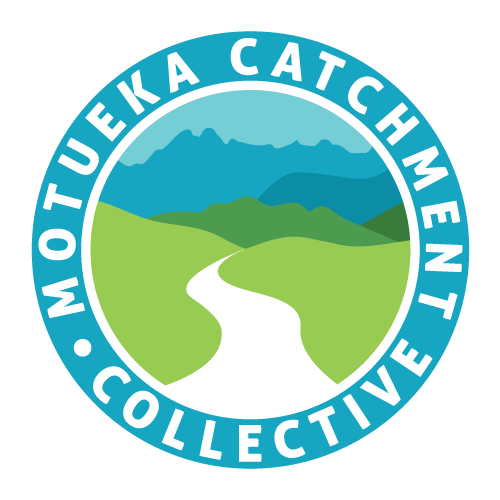Community freshwater SHMAK monitoring in action on the Orinoco awa
Steve Anderson, Daniel Bulman and Harnold Dunnink all attended the MCC freshwater monitoring training on February 17th and discovered they all live in the Orinoco River sub-catchment.
They decided it made sense for them to join together to monitor the Orinoco River. This was their third monitoring expedition and the group plan to go every month. Going regularly will help them understand the waterway’s current condition and perhaps identify trends in the data over time.
“We all care for and want to look after our river, and this is one positive thing we can do to achieve this. We’re still learning but it gets easier every time as we get used to the equipment and measurement techniques, and what’s required to make sure they’re accurate.” Said Harnold.
Elliot Easton of Tasman Bay Guardians (TBG) also came along to support the group. He largely left them to it, but was on hand to provide tips and technical guidance.
“The one day SHMAK training gives a great base of understanding and technical know-how for community volunteers. But it really helps the success of these groups if they have some in-person support as they start up their monitoring programme rather than just leaving them to muck through and figure it all out themselves.”
The three began by testing phosphorous and nitrate. There was discussion about how to use the phosphorous testing gadget properly. They consulted the SHMAK kit guidance booklet and sought advice from Elliot when the readings didn’t seem quite right. After while they got it sorted.
Steve shows how he determines the nitrate levels in the video.
Steve also collected a water sample to test E.coli, which essentially comes from human or animal excrement. This would need to be put in an incubator at 37 degrees overnight to determine the levels.
The presence of nitrates or phosphorous at higher or increasing levels can lead to excessive algae growth, which can reduce the oxigen available for acquatic life, affecting the river habitats, and depending on the type of algae can potentially be toxic to freshwater species . High levels of E.Coli has risks for human health, as well as the rest of the organism living in the awa, that help to keep it clean and healty.
Next came an investigation of the macro-invertebrates in the stream. After carefully extracting tiny swimming insects from the tray of decomposing gunk with a pipette, they identified a mayfly and a caddisfly, amongst other invertebrates. The identification book which comes with the SHMAK kit is very useful for this exercise. Varieties and abundance of macro-invertebrates weren’t high. Last time they found more, but the river is also quite gravelly, with few bigger stones and rocks under which macro-invertebrates like to hang out.
Then came a whole lot of tests of the characteristics of the Orinoco – its flow, depth, velocity, temperature and clarity, involving tape measures, floating tennis balls, thermometers, timers and a bit of maths, something Daniel was clearly skilled at, given his career in financial management!
The group were already starting to notice differences between their monitoring sessions:
“Last time this island was much bigger so we took the flow reading further up the stream. It would be really interesting to know where all this gravel in the stream bed is coming from”.
Daniel recorded the results and measurements in a booklet. Later the results would be uploaded onto NZ Water Citizens database – which provides anyone in New Zealand involved in volunteer stream monitoring a database for storing, understanding, presenting their data, and for viewing data from other sites. There is also a forum on the site for asking questions and sharing stories.
The group clearly enjoyed their time finding out more about their local stream, and learning new skills together. Steve said:
“the best thing about doing this monitoring is connecting with your neighbours and doing the testing together. It is also nice to come and spend time outdoors splashing around in a stream, being a scientist”.
The group take measurements from two points along the Orinoco so they have comparisons at an upstream and downstream site. Elliot said he didn’t think there had been any monitoring done on this stream so this group was the first to be gathering this important data. This is what makes community led freshwater monitoring so important and valuable.
“The TDC regularly monitor only eight sites across the catchment. Our data, and that of other community groups, can help build a broader picture of what’s happening in a greater number of the streams and rivers that flow into the Motueka River. This might lead to particular locations being investigated more carefully, or more targetted solutions being taken to address water quality issues.” Steve commented.
Harnold had a word to say to others in the community interested in freshwater montioring:
“I’m excited to be part of this community-led program for monitoring freshwater. This excellent program has such a positive impact on the environment and the community in general. Over time, these tests will tell us a story about the catchment we are in, the health of its ecosystem, and how we have looked after it. Monitoring the water gives me a greater awareness and a deeper connection with the local environment and a sense of responsibility for its preservation for future generations. I hope more communities will start monitoring their streams to create their own story about their catchment.’












